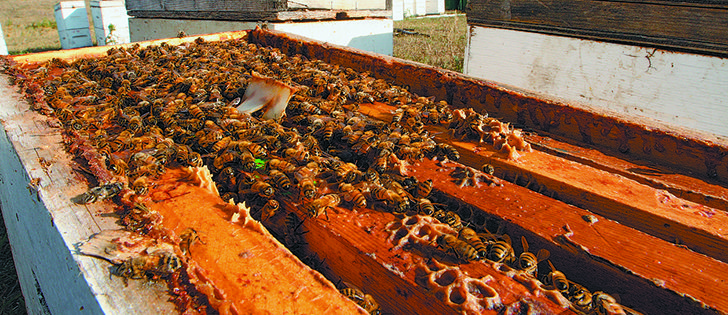MELFORT, Sask. — The honey production season is short and intense for bees and beekeepers.
Six-month jobs aren’t that attractive to Canadian workers so most honey producers rely on temporary foreign workers who go home after the season.
The Canadians they do employ get laid off for the winter.
For that reason, Stacey Zosel and Jake Berg, who have operated SJ Beez near Melfort for about 10 years, are starting a related business to try to keep the Canadians busy through winter.
They already have material on site in their honey processing facility to begin building bee boxes for other beekeepers.
Read Also

Sask. ag group wants strychnine back
The Agricultural Producers Association of Saskatchewan has written to the federal government asking for emergency use of strychnine to control gophers
“We don’t even have the machine here yet, but sales look good,” Zosel said last month.
“We keep getting calls. If we could ever get it going, orders are there.”
Berg was in California trying to expedite the shipment of the box-building machine. It would be the first in Canada and is notable for the way it puts pre-cut pieces together and machines the joints, the rack shelf for the frames that hold the honey and a hand-hold to make moving the boxes easier.
“We have 10,000 boxes pre-cut already,” Zosel said, noting they expect to make 10,000 a month.
There is room in the market because although the boxes are reused, they do break.
The market is mainly on the Prairies, but orders have also come from Ontario and Quebec.
“The buyers were excited that we were going to do this because they have a hard time getting boxes,” he said.
Other suppliers have not been able to deliver required quantities.
Zosel said it will cost up to $9 to build a box, and suppliers will likely sell them for $12 to $14 each.
The boxes will be sold through Bee-Maid and other supply companies. SJ Beez isn’t interested in selling the boxes retail.
“We just want to mainly create work for our workers and make a little bit on it, but it’s mostly for job creation,” he said.
SJ Beez employs up to 15 people from April through October to help with 1,600 hives.
Bee keeping is not easy work. The bee boxes weigh 100 pounds each and workers wear hot, heavy suits to prevent stings.
The temporary foreign workers that SJ Beez hired this year include four people from Nicaragua, although Zosel said he would have liked to employ six and could probably use 10.
The temporary foreign worker program has become more challenging because the amount of paperwork has increased and the process takes longer. He said he can’t apply for workers until three months before they are needed, but it seems to take four months to complete the paperwork, even though it’s the same paperwork every year.
“The four-year rule is really kicking us,” Zosel said, referring to changes that allow workers to remain at a job for only 48 months.
Because they work for six months, bee workers can actually return to the same job for eight years.
“Then they’ll be a good, experienced worker and have to stay home for four years,” he said.
“By then they’re going to some other country. We’re training people for everybody else.”
The boxes will be made in the company’s large state-of-the-art honey processing facility, which was built in 2011 to include automated extraction lines. The owners designed it themselves to function the way they wanted.
SJ Beez ships honey in barrels to other processors for blending. It has 800 barrels that can each hold 660 pounds.
Zosel said the facility could accommodate the production from 4,000 hives, but 2,000 would be the maximum the two could run.
He said it’s better to have fewer hives and maintain them well.
The business includes other tasks besides honey extraction.
Zosel has 1,400 queen bees to produce this year and nuclear hives to develop.
“It’s been a challenge the last 10 years to keep bees alive,” he said, referring to mites and disease.
They are splitting off more hives as a way to keep bees healthier and stronger. A queen lasts three or four years. However, a queen lasts only about 18 months in the U.S.
Zosel said American beekeepers put a lot more chemicals into their hives to protect against mites, and queens are becoming sterile.
He is also critical of how large companies in the U.S. move tens of thousands of hives around the country by truck to pollinate almonds in California, oranges in Florida, blueberries in Maine and finally to make honey in North Dakota.
They charge $150 to $200 per hive for pollination services and some have as many as 40,000 hives, he said.
However, he believes feeding on one crop at a time is not good for bees.
karen.briere@producer.com


















